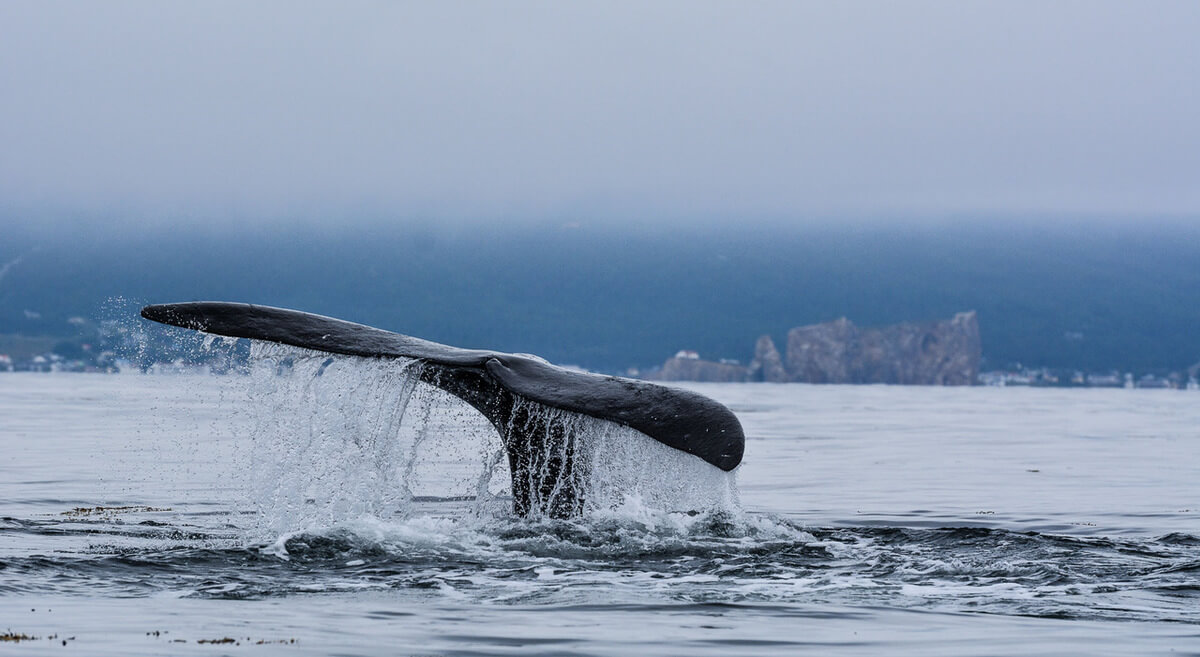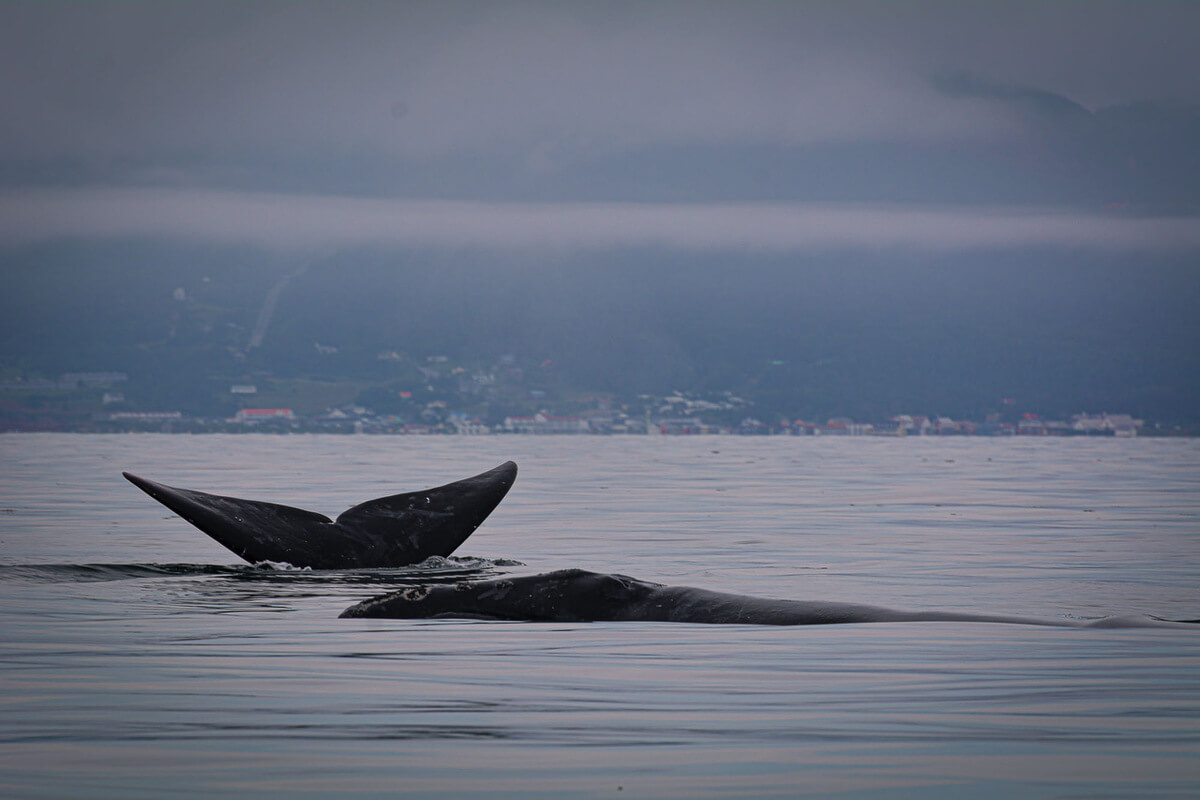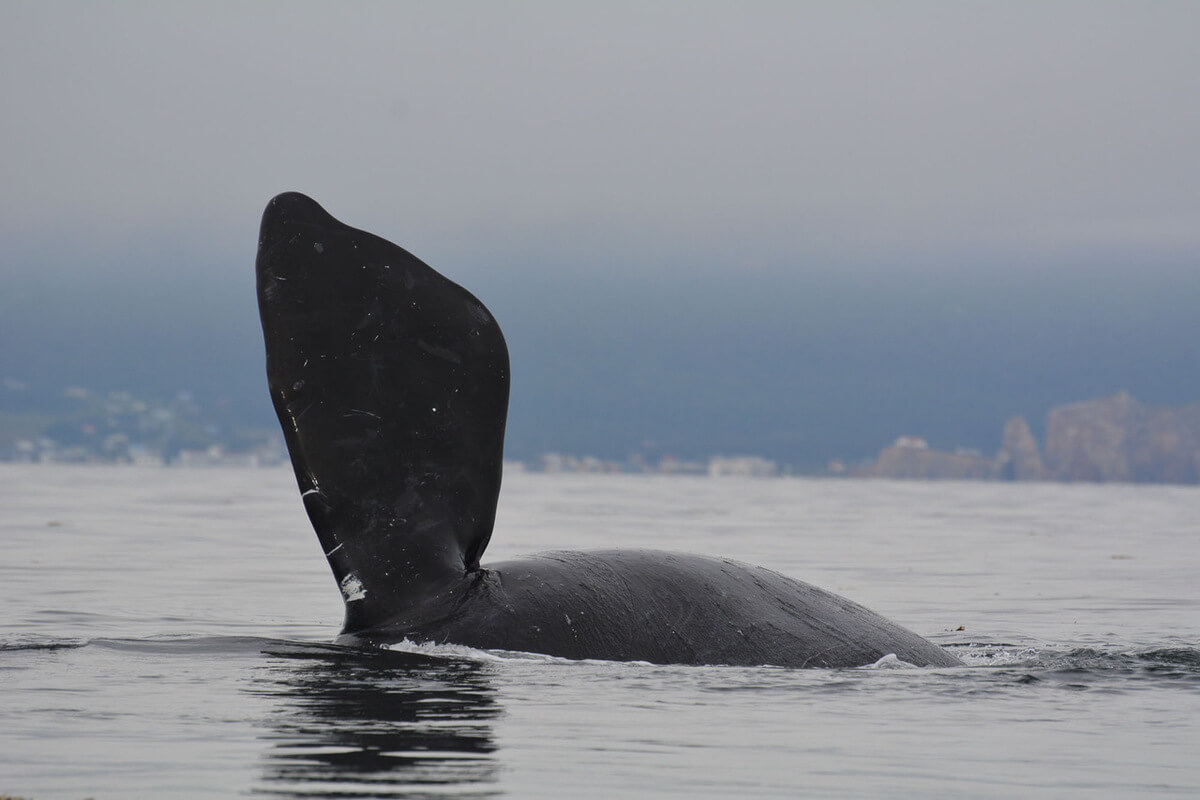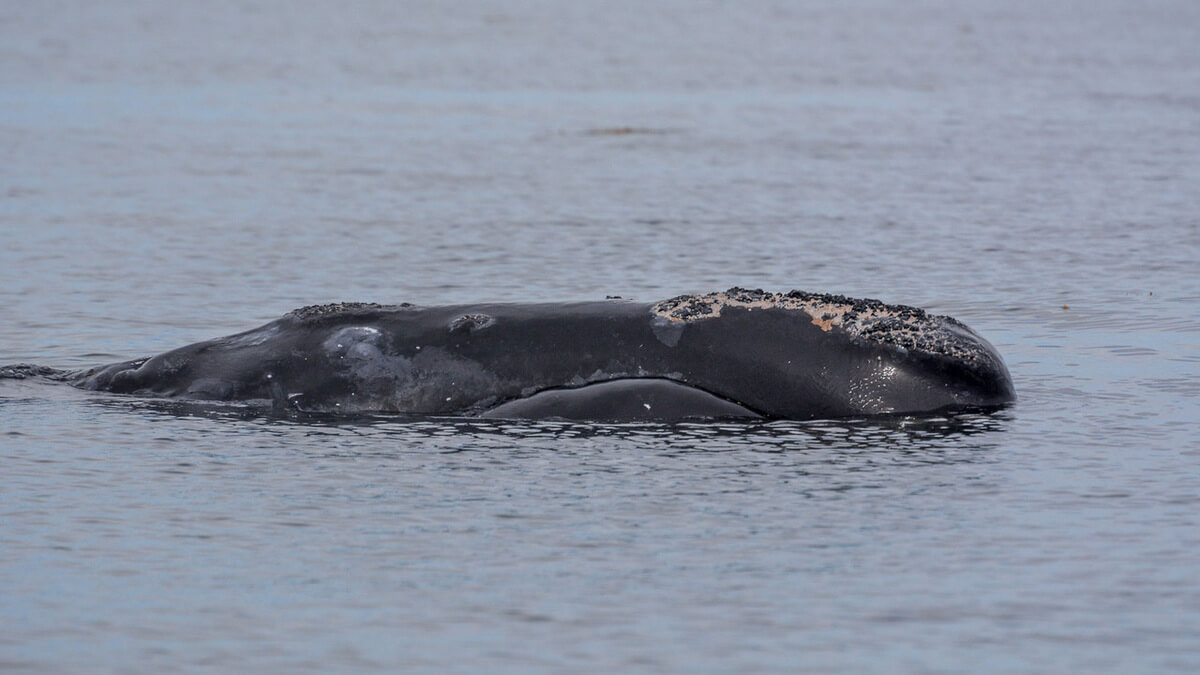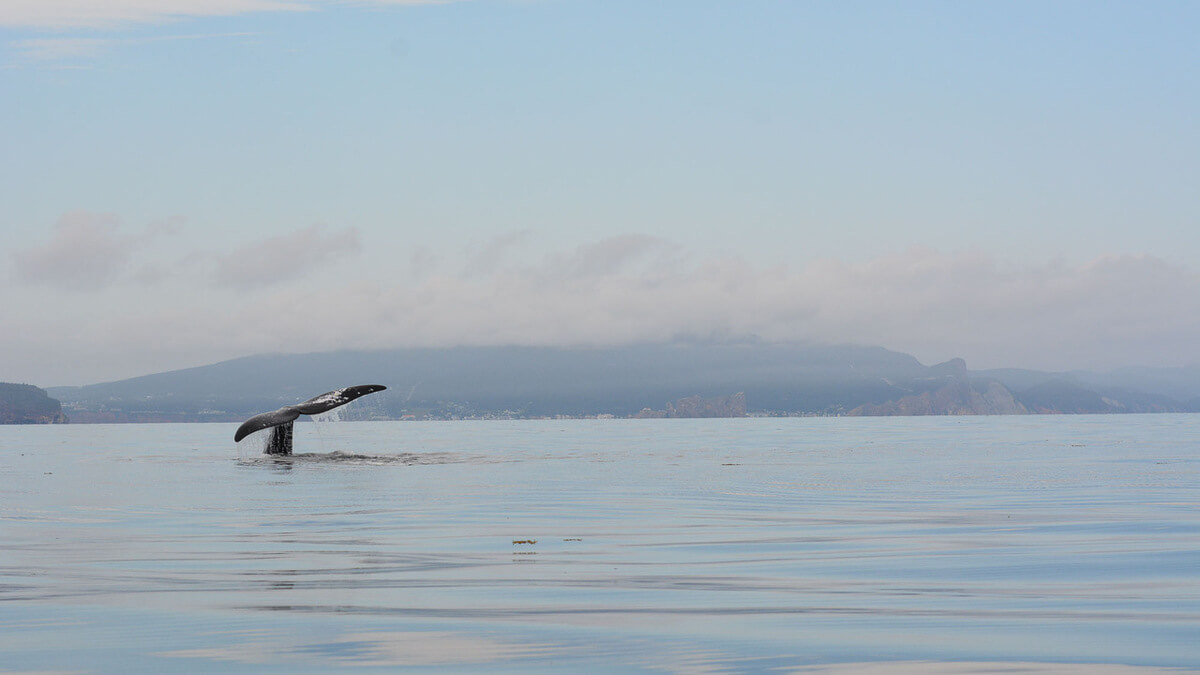For scientists, the endangered North Atlantic right whale is a source of both fascination and concern. This is why a number of researchers have attempted to better understand the factors at play in its survival and have studied some of the species’ behaviours. This article describes five new discoveries that have been made about the North Atlantic right whale in the past few months!
1. Right whale fertility is influenced by the size of the animal
Between 1981 and 2019, it was observed that North Atlantic right whales have likely diminished in size due to the fishing gear entanglements frequently suffered by these animals, which leads to additional energy expenditure. According to a recent study, this decrease in body size is likely having an impact on fertility rates, with smaller females producing fewer calves during a potential reproductive year than those that are larger.
To draw these conclusions, 41 female right whales were tracked and measured using aerial photogrammetry techniques between 2000 and 2019. Based on collected data, the researchers found that the interval between births was greater in smaller females than in large ones. Indeed, even if the females are in good health, they are still limited by their size in terms of the energy reserves they can accumulate. This therefore implies a longer recovery period between each birth as well as fewer calves per female over the course of her lifetime.
Over the long term, this could have major consequences for the survival of the species, as fewer calves per female means that the total number of individuals will also eventually decrease. To be continued!
2. Right whale vocalizations vary according to the animals’ age and sex
North Atlantic right whales communicate with each other by producing vocalizations, and it has recently been shown that these sounds vary according to certain individual characteristics such as age and sex.
Indeed, the researchers found that in the species’ calving grounds, mothers and calves communicated with each other with very short, low-amplitude sounds, perhaps so as not to be detected by other whales or potential predators. Some scientists also noticed that 7- to 9-month old calves emit shorter and higher-frequency sounds than adults, a little like a babbling baby.
In a group environment, males and females emit different vocalizations. Males are believed to make gunshot-like sounds while females occasionally produce complex scream-like noises. Right whales are also believed to be able to produce low-frequency sounds in order to be heard in environments with significant ambient noise such as shipping traffic.
On the other hand, although some sounds are attributable to males and others to females and young, other sounds such as contact calls between individuals can likely be made by all right whales, regardless of their sex or age.
3. Just because a female is no longer with her calf doesn’t necessarily mean the latter has perished
Researchers often tended to worry when they spotted a right whale without her first-year calf. Indeed, it was often believed that a mother spotted alone meant that her offspring had died. However, a recent study seems to show the opposite.
Calves normally stay with their mother for 10 to 12 months, but they may go their own way even earlier. This behaviour, which might explain why females are sometimes seen alone, has been observed on a few occasions by researchers.
Additionally, since right whale sightings are mostly made from the air, surveyors may sometimes be unable to clearly see the mother or the calf feeding below while the other individual is at the surface, and the individual spotted is assumed to be alone.
Because calves are most often identified thanks to the mother accompanying them, it is also possible that certain individuals cannot be recognized when they are seen alone years later. Indeed, it is difficult to apply photo-ID techniques with young right whales, as the white callosities on their heads are not yet developed at such an early age.
Efforts should therefore be put into photo-ID’ing young right whales, believe the researchers behind this study, as it has occurred on a few occasions that a calf considered dead has been seen again a few years later, alive and well!
4. How are right whales affected by underwater noise?
One of the factors that can stress the North Atlantic right whale and affect its survival is noise pollution. Elsewhere in the world, actions have already been taken to limit the impacts of noise, but in Canada, this stressor is still poorly understood. This is why researchers explored this topic and identified a few parameters to better identify the different types of noise that harm right whales.
Harmful noises most critical to monitor include seismic airguns, active military sonar, and commercial shipping. For each type of noise, the researchers indicated whether a potential impact was known and stated the consequences that have been observed in right whales, including modified diving and breathing patterns, changes in vocalizations, physiological impacts, etc.
With this study, the researchers aimed to shed light on the various noises that are harmful to right whales while at the same time presenting policymakers with tools to better quantify these various stressors.
5. Climate change and right whales: consequences already being observed
Climate change is already affecting some marine animals, including the North Atlantic right whale, which has been observed in areas it used to frequent during the whaling era.
Indeed, researchers have noted a decrease in the number of individuals and the number of calves in the Gulf of Maine, one of the fastest-warming regions of the planet. However, right whales appear to be increasingly present in another region, namely southern New England. At this location, a greater-than-normal abundance of right whales was observed from 2013 to 2019. North Atlantic right whales are now being seen here year-round.
However, in its new range the species faces additional threats such as shipping traffic and noise pollution. This is why the habitat changes of this species must be monitored by scientists in the coming years in order to better protect it.


